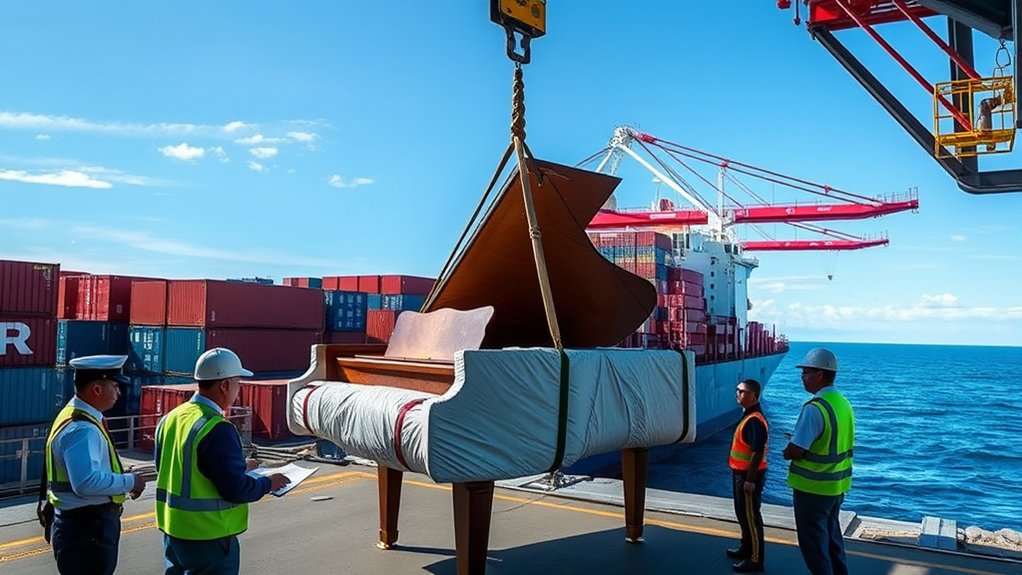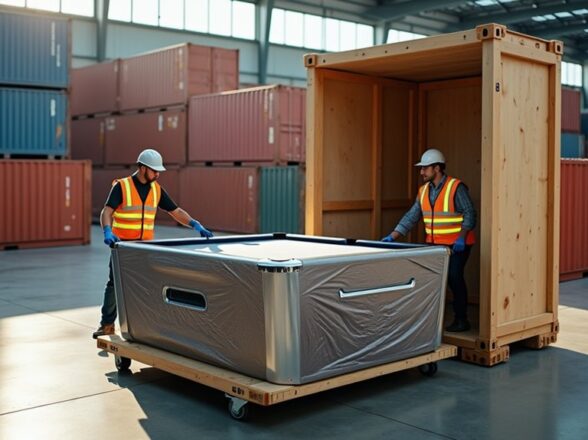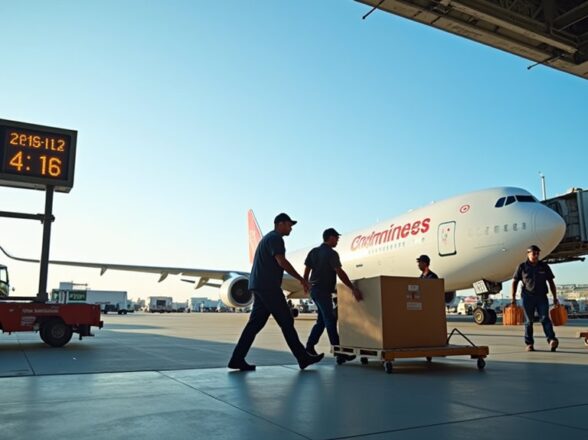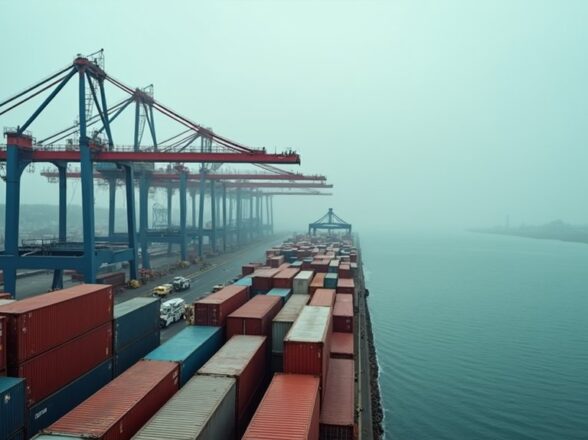How to Move a Piano Internationally? A Comprehensive Guide to Overseas Shipping and Customs

To move a piano internationally, start by evaluating its condition and making any necessary repairs. Pack it securely with padding and blankets, and disassemble parts if needed. Choose a reliable shipping company that specializes in piano transport. Research and compare shipping costs, and guarantee you understand customs regulations for the destination country. Prepare required documentation and check insurance options to cover potential damages. Once your piano arrives, inspect it for any issues and let it acclimate before tuning. Following these steps guarantees a smoother move for your instrument. There's more to understand as you plan your shipment.
Key Takeaways
- Conduct a thorough inspection of the piano, addressing any repairs needed before the move to prevent further damage during transport.
- Research and choose a reputable shipping company that specializes in piano transport, comparing costs and services to find the best option.
- Prepare necessary customs paperwork, including shipping invoices and ownership proof, to avoid delays during the international shipping process.
- Calculate shipping costs based on weight, dimensions, and distance, factoring in potential duty fees and customs regulations for the destination country.
- Inspect the piano upon arrival, allowing it to acclimate before reassembling and scheduling a professional tuning to ensure optimal performance.
Assessing Your Piano's Condition

Before you commence your international move, it is crucial to evaluate your piano's condition. Start with a thorough inspection. Look for scratches, dents, or any signs of damage. Check the keys and pedals to verify they function properly. An effective condition evaluation can help you understand the piano's value and whether it needs repairs. Consider getting a professional piano appraisal to gauge its worth accurately. This appraisal can also help in determining the best way to pack and transport your instrument. If repairs are necessary, address them before the move to prevent further damage. Properly evaluating your piano's condition will make the entire moving process smoother and protect your investment during the journey.
Choosing the Right Shipping Company
When choosing a shipping company, start by researching options that specialize in moving pianos. Compare shipping costs to get the best deal without sacrificing quality. It is crucial to find a company that understands the unique requirements of transporting such a delicate instrument.
Research Shipping Companies
Choosing the right shipping company is essential, as it can greatly impact the safety and reliability of your piano transport. Start by researching potential companies online. Look for shipping reviews to understand others' experiences. Pay attention to both positive and negative feedback. A company's reputation matters, so focus on those with a strong track record in piano shipping. Check if they specialize in transporting musical instruments, as this expertise can be vital. Additionally, verify their insurance policies to protect your instrument during transit. Don't hesitate to ask questions or seek recommendations from friends or music professionals. This thorough research will help you make an informed decision, ensuring your piano arrives safely at its new destination.
Compare Shipping Costs
Once you've narrowed down your options for shipping companies, it's time to compare shipping costs. This cost comparison is essential for your international shipping needs. Here's how to evaluate your options effectively:
- Obtain Quotes: Request detailed quotes from each company to understand their pricing structures.
- Check Services: Look at what services are included, such as packing, insurance, and delivery.
- Evaluate Transit Times: Compare how long each company estimates for delivery, as speed may impact your decision.
- Read Reviews: Check customer feedback to gauge reliability and service quality.
- Consider companies with a global network of partners that can facilitate seamless international moves and customs handling.
Preparing Your Piano for Shipping

Before shipping your piano, it is crucial to prepare it properly to guarantee it arrives at its destination in perfect condition. Start by removing any loose items such as sheet music or accessories. Next, use piano packing materials like blankets or bubble wrap to cover the instrument. This provides a layer of protection against scratches and dents. Secure the cover with tape to keep it in place. If you have a grand piano, consider disassembling the legs for easier transport. Make sure to use sturdy crates or cases designed for pianos, as these protective materials will help absorb shocks during transit. Finally, label the package clearly to promote careful handling by shipping personnel. To ensure maximum safety during international shipping, it is advisable to hire specialized piano movers who are experienced in handling complex instruments and capable of managing overseas logistics efficiently.
Understanding Shipping Costs
Understanding shipping costs for your piano can be a bit complex, but breaking it down into key factors makes it easier. Here are four main elements to evaluate:
- Shipping weight: Heavier pianos cost more to ship. Weigh your piano to get an accurate estimate.
- Piano dimensions: The size of your piano affects the space it occupies during transport. Measure its height, width, and depth.
- Distance: The further your piano travels, the higher the shipping cost. Calculate the distance to your destination.
- Service type: Different shipping options, like standard or expedited, can impact your total cost.
Navigating Customs Regulations

When you're moving a piano internationally, steering through customs regulations can feel challenging, but it's essential for guaranteeing a smooth changeover. First, check the import regulations for the country you're shipping to. Different countries have specific rules regarding musical instruments. You need to know if your piano is subject to any restrictions or special handling. Additionally, be aware of potential duty fees. These fees can vary based on the piano's value and the destination country's policies. It's wise to factor these costs into your budget early on. Finally, consider consulting a customs broker. They can help you navigate these regulations and guarantee all requirements are met, making the process easier for you.
Required Documentation for Shipping
Once you've navigated the customs regulations, gathering the right documentation for shipping your piano is the next step. You'll need a solid documentation checklist to guarantee a smooth process. Here's what to prepare:
- Shipping permits – Obtain any necessary permits based on the destination country's regulations.
- Bill of lading – This document confirms the contract between you and the shipping company.
- Customs declaration form – Complete this form to declare your piano's value and ensure it complies with local laws.
- Insurance documents – While we'll cover insurance options later, having these ready is essential.
Insurance Options for Your Piano

While you're preparing to ship your piano, securing the right insurance is essential to protect your investment. You'll find various insurance types available, each designed to cover different risks during transit. Consider options like marine cargo insurance, which provides coverage for damage or loss while your piano is being shipped overseas. Another option is a homeowner's policy, which may include coverage for items in transit, but be sure to verify the specifics. It's vital to assess your coverage options carefully. Make sure you understand the terms and limits of each policy. Researching and choosing the right insurance can give you peace of mind, ensuring that your piano is protected throughout its journey to a new home.
Delivery and Unpacking Process
As the day of delivery arrives, you'll want to guarantee everything is in place for your piano's safe arrival. Use this delivery checklist to prepare:
- Make certain the delivery path is clear of obstacles.
- Check that the moving team has the necessary tools and equipment.
- Confirm the piano is correctly positioned in the truck for transport.
- Have a designated area ready for unpacking.
To ensure a successful move, it's crucial to verify licenses and certifications of the moving company, ensuring you have selected a reliable mover for your piano. Once your piano arrives, follow these unpacking tips: First, let the movers handle the piano carefully. Next, inspect it for any damage. After that, remove all packaging materials. Finally, position the piano in your chosen location, making sure it's stable and level. Taking these steps will help guarantee a smooth delivery and unpacking process.
Post-Shipping Piano Care

After your piano has been safely delivered, it is crucial to give it the proper care to guarantee it stays in peak condition. Start by establishing a regular tuning schedule. Pianos should generally be tuned every six months, especially after shipping. Next, focus on humidity control. Pianos thrive in a stable environment, ideally between 40% and 60% humidity. Use a hygrometer to monitor levels and consider a humidifier or dehumidifier as needed.
| Care Tip | Action |
|---|---|
| Tuning Schedule | Tune every 6 months |
| Humidity Control | Maintain 40%-60% humidity |
| Regular Cleaning | Dust keys and surface weekly |
| Check for Cracks | Inspect piano for damage |
| Play Regularly | Keep the piano in use |
Frequently Asked Questions
Can I Ship a Piano Without Disassembling It?
Yes, you can ship a piano without disassembling it, but you'll need proper piano packaging. Keep in mind that shipping costs may increase due to the size and weight, so plan accordingly for your budget.
How Long Does International Piano Shipping Usually Take?
International piano shipping usually takes a few weeks, depending on shipping times and international logistics. Factors like destination, customs clearance, and shipping method can affect how long you'll wait for your piano to arrive.
Are There Specific Shipping Restrictions for Pianos?
When shipping a piano, you'll face specific shipping regulations that vary by country. You must also consider piano insurance to protect your investment. Are you ready to navigate the complexities of international piano transport?
Will My Piano Be Stored During Shipping?
Your piano might be stored during shipping, depending on the shipping options you choose. It's essential to check with your shipping company about their piano storage policies and how they handle transit times.
Can I Track My Piano During Its Journey?
Yes, you can track your piano during its journey. Many shipping companies offer piano tracking options. Don't forget to contemplate shipping insurance for added peace of mind while monitoring your piano's progress.
Conclusion
Moving a piano internationally is a complex task, but you can manage it with careful planning. Just as Odysseus faced challenges on his journey, you'll navigate shipping logistics and customs regulations. By evaluating your piano's condition, choosing the right shipping company, and preparing it properly, you can guarantee a smooth changeover. Remember to secure the necessary documentation and consider insurance options. Once your piano arrives, take the time to care for it properly to maintain its quality.
Related posts
Recent posts
Post Categories
Tags
Subscribe

















